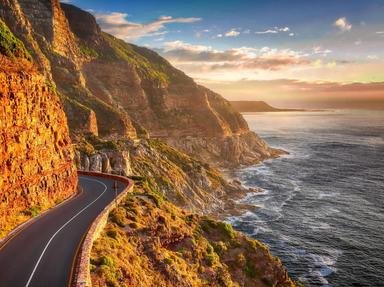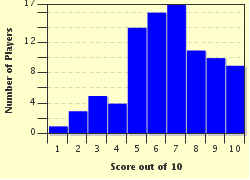Quiz Answer Key and Fun Facts
1. South Africa's flag contains six colors representing the nation's nickname, The Rainbow Republic. To what does the nickname refer?
2. We took a day of non-safari activity to visit the site of a famous battle which occurred during the 1879 Anglo-Zulu War. What is the name of this battle for which the most Victoria Crosses ever were awarded to a British regiment for a single engagement?
3. We arrived at our first safari camp in the Sabi Sand Game Reserve near Kruger National Park. Kruger, of course, is Africa's largest national park.
4. At earlier stops on our safari we had seen some of the Big Five - animals coveted by tourists and hunters. Naturally we were anxious to check off the last couple of animals on the list. Which of these animals is NOT one of the Big Five?
5. On our first morning in Sabi Sand, our guide and tracker located a pair of bachelor male white rhinos. If you saw a white and a black rhino standing next to one another, what would be the easiest way to tell them apart?
6. On another morning game drive, we met a spotted hyena coming toward our Land Cruiser. A short distance away we saw two hyena cubs outside the entrance to their den curled up and taking a nap. True or false: hyenas hunt small game such as rabbits, but survive primarily by scavenging other predators' kills?
7. South African banknotes are issued in five denominations. Since 2012, the obverse (front) of all values bear the likeness of Nelson Mandela. What picture is on the reverse side?
8. We drove north to Timbavati Game Reserve for the final few days of our journey. Timbavati is home to genetically mutated white lions. Which of the following statements is NOT true about the white lions?
9. Our lodge at Timbavati was on the banks of the Nhlaralumi River which was quite dry at the time we were there. Several times we saw families of elephants in the riverbed and noticed the adults pounding holes in the sand with their front feet. What were they doing?
10. Before departing South Africa, we spent a day touring one of the "Townships" - areas where the former apartheid government required non-white residents to live. This township became famous during the nation's racial struggle due to a deadly uprising in 1976. What area that's now incorporated into Johannesburg did we visit?
Source: Author
wilbill
This quiz was reviewed by FunTrivia editor
Pagiedamon before going online.
Any errors found in FunTrivia content are routinely corrected through our feedback system.

